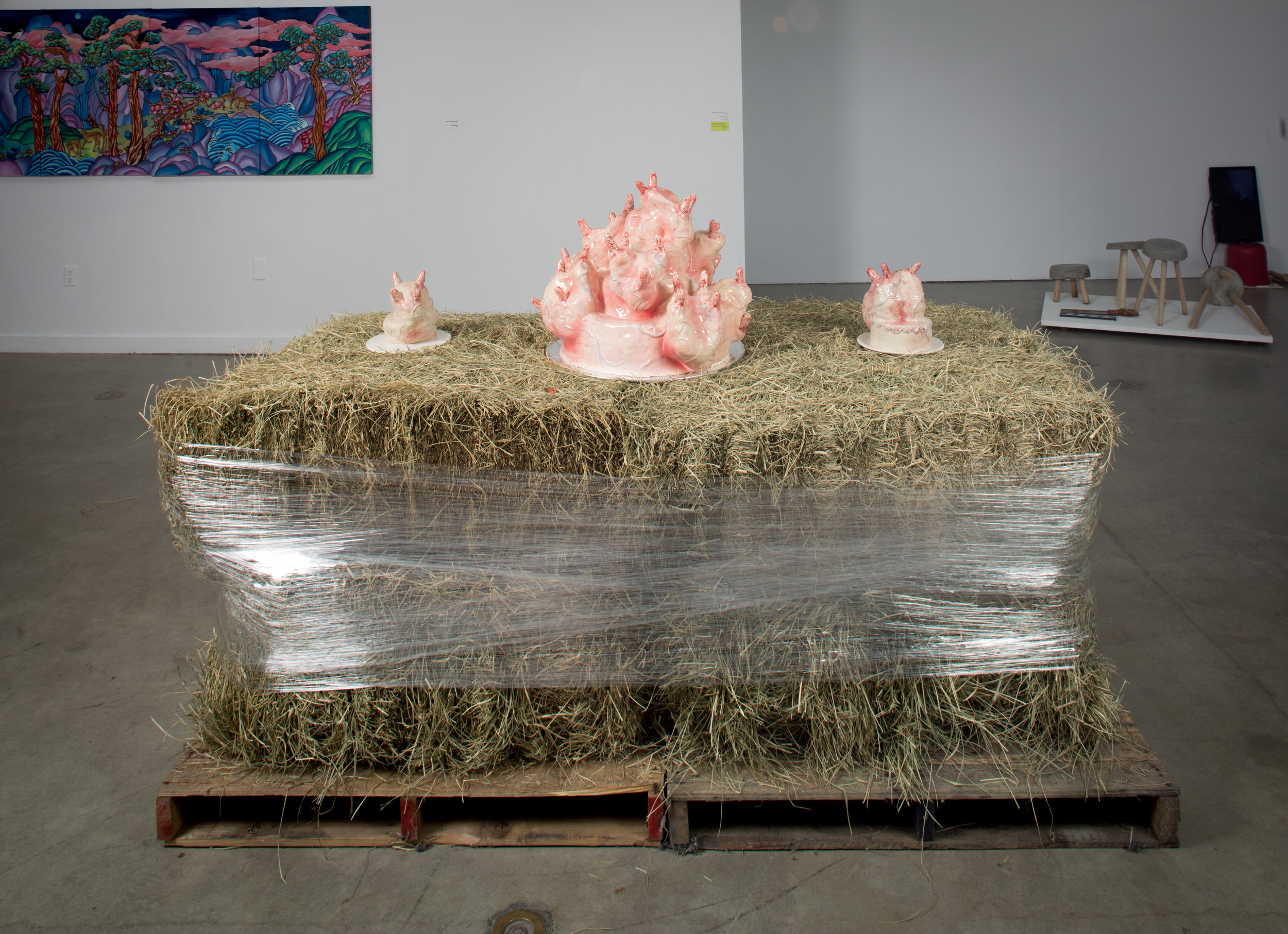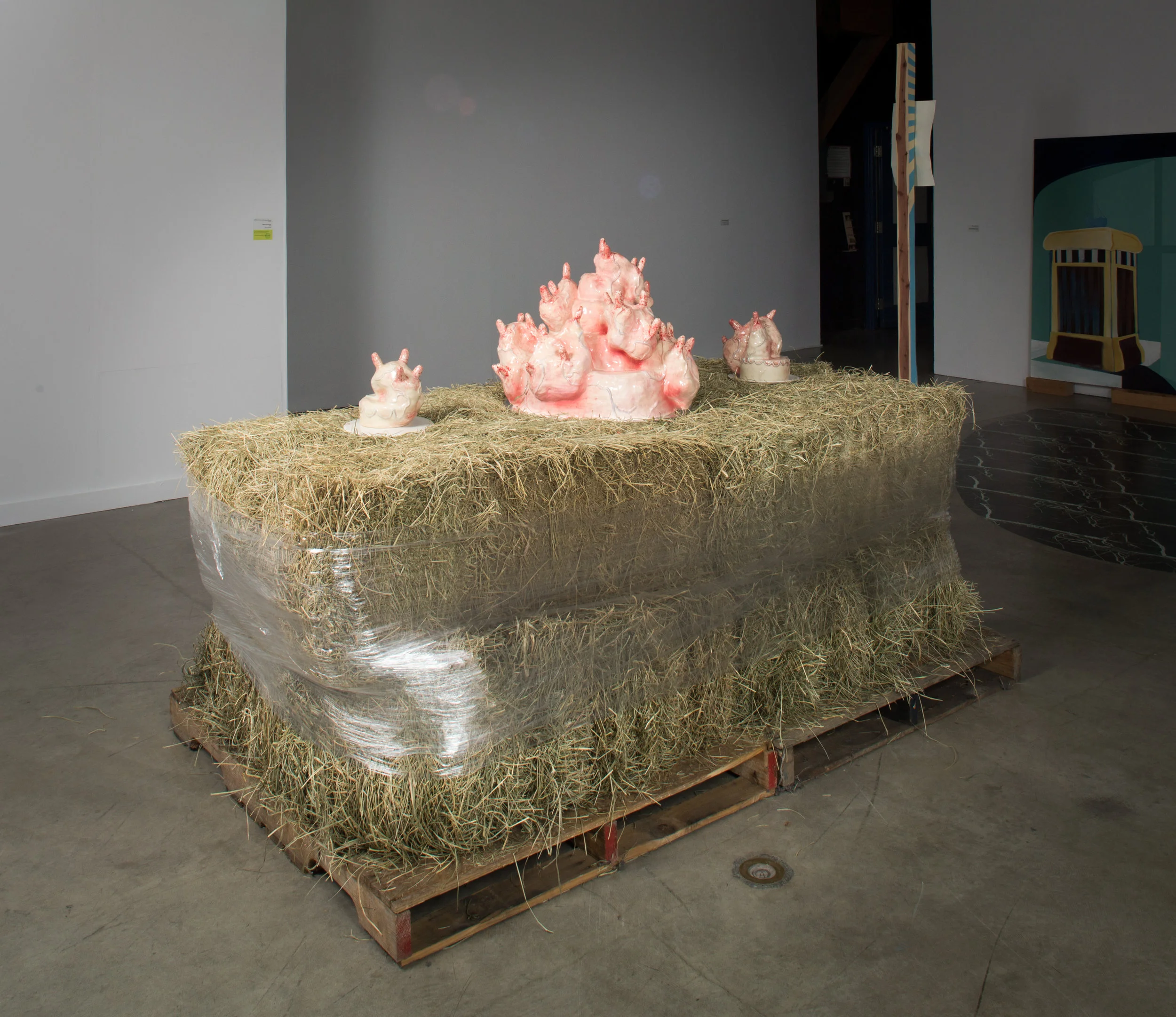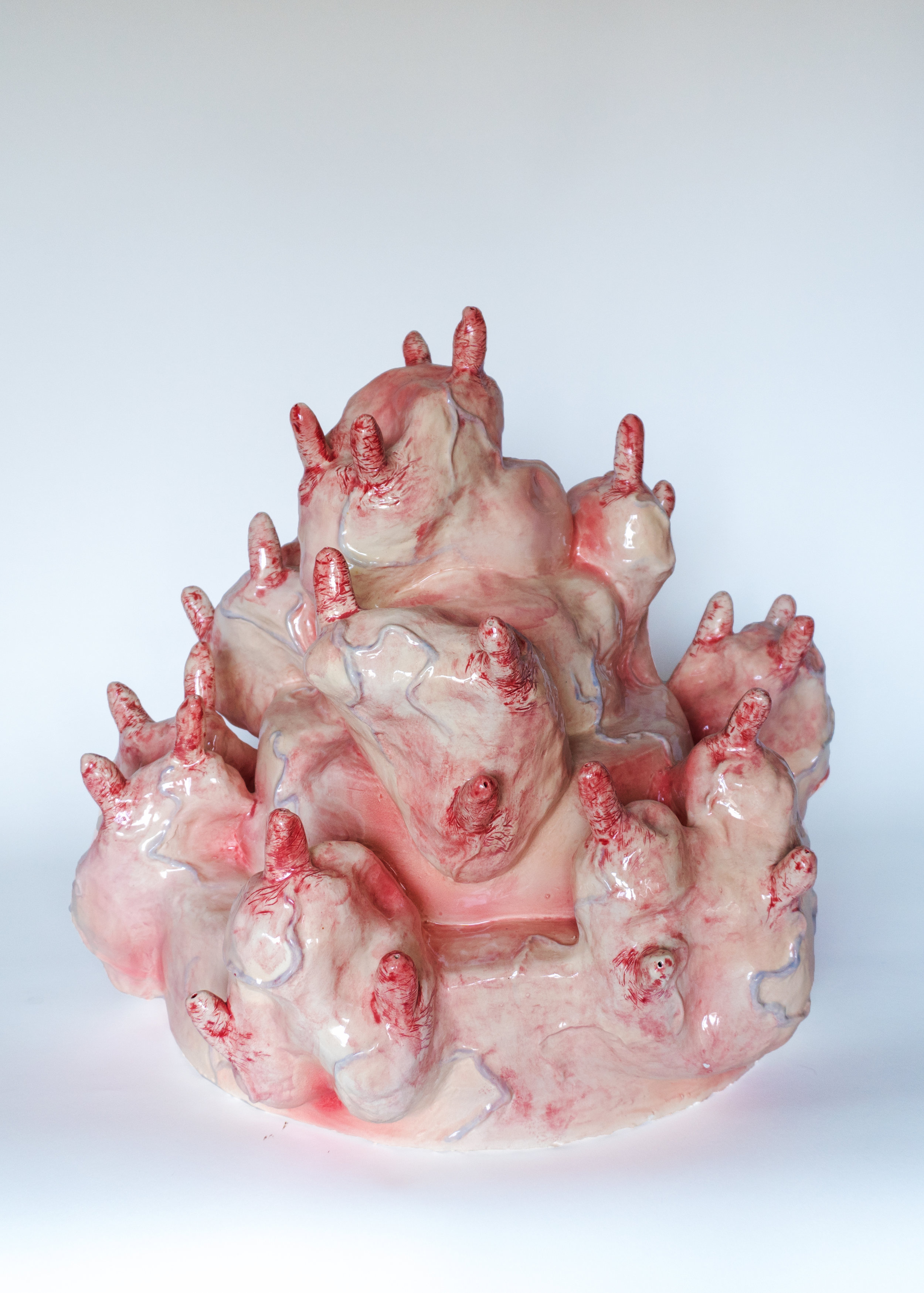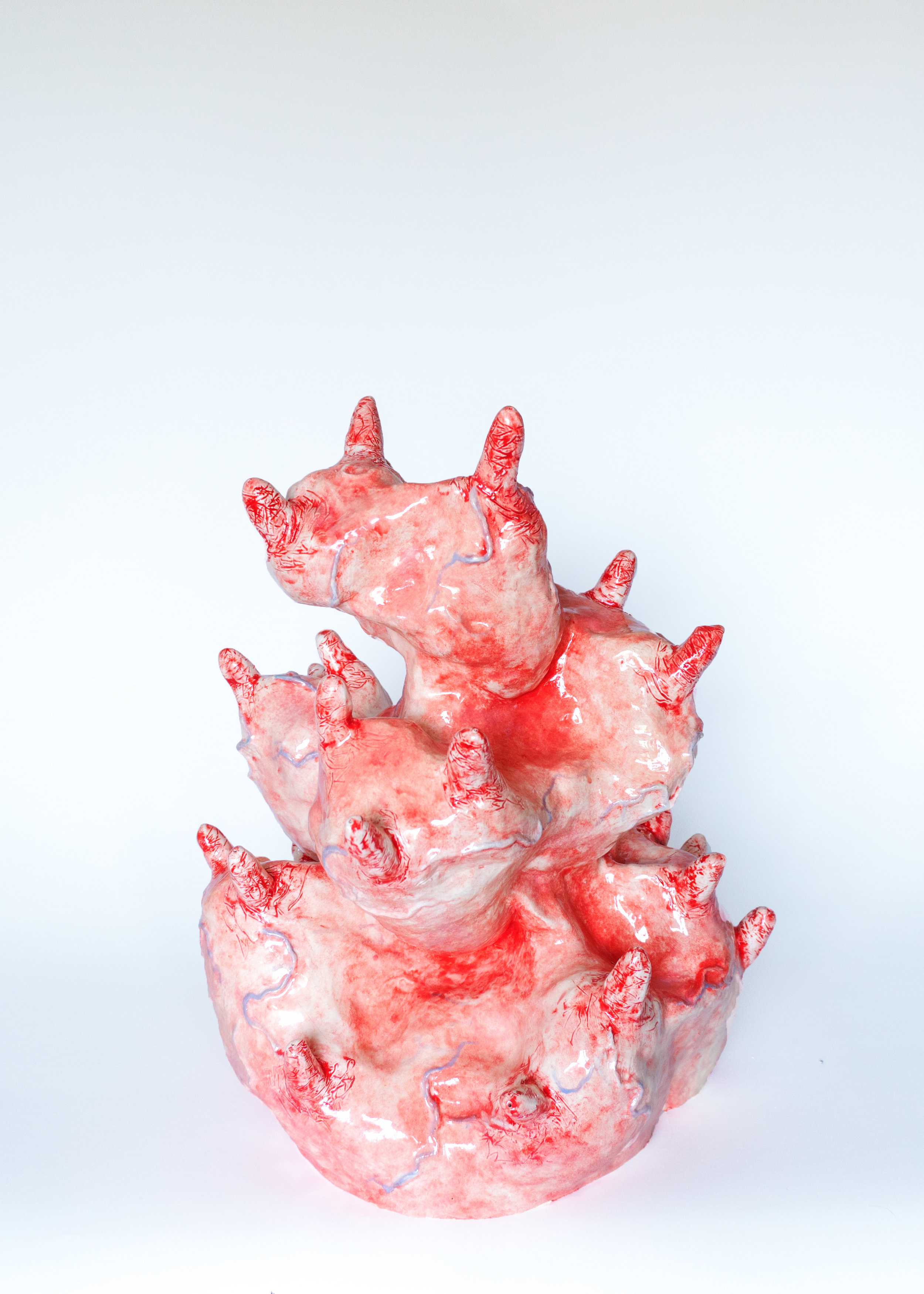Udder Consumption
My current body of work examines large agriculture industries, specifically looking at our Dairy Industry. Growing up on a farm provided me with the knowledge of where our food comes from and the treatment of our livestock. I want to further explore issues surrounding the dairy we consume on a daily basis. We are constantly consuming different forms of dairy, but not considering the farming methods used to produce this commodity. Within North American culture we consume gluttonous quantities of these products, most of the time without thinking about the repercussions on the cattle we are causing severe distress and suffering to. Our media and supermarkets romanticize and idealize our farming industry, when this is not the reality of most farming practices. We personify animals in many ads and marketing, but what are we really doing to them?
The sculptural pieces created are based on functional forms and cakes. We wouldn't dare to drink milk from a cow udder, but having it from a glass is ok? My ceramic work should provoke inquiry about many farming practices as well as our buying and consuming habits. The udder cakes are a series of works created as a centre piece the way a cake would be at a dinner party for a celebratory event. From a distance, the colours of these cakes appear as delicate and beautiful, but taking a closer look, one quickly sees the deformities and grotesqueness in them. Generally, the colour palette of pinks and reds at first glance can be viewed as warm and inviting, but on closer observation quickly becomes repulsive and uncomfortable to the viewer. The udder cakes start becoming vulgar and nauseating and serve as a cautionary reminder to the viewer the realities of what our dairy industry has become.
My body of work also includes the sensation of scent, which is integral to the piece and often ignored in much visual work. Hay bales are used to act as a table for the ceramic sculptures and is related to feed for cattle, but also has a nostalgic scent for many. The scent of the hay brings the viewer directly to the source of where our dairy comes from. We are so far removed from our food sources that the hay confronts the viewer with our dairy industry.
This body of work is not meant to convert the audience to different ways of eating. It should simply create a conversation about our current food industry and what it is that we are doing to it. We should be more aware of our production and consuming behaviours. This work questions our food culture and instant gratification, while ignoring the consequences of our indulgences




